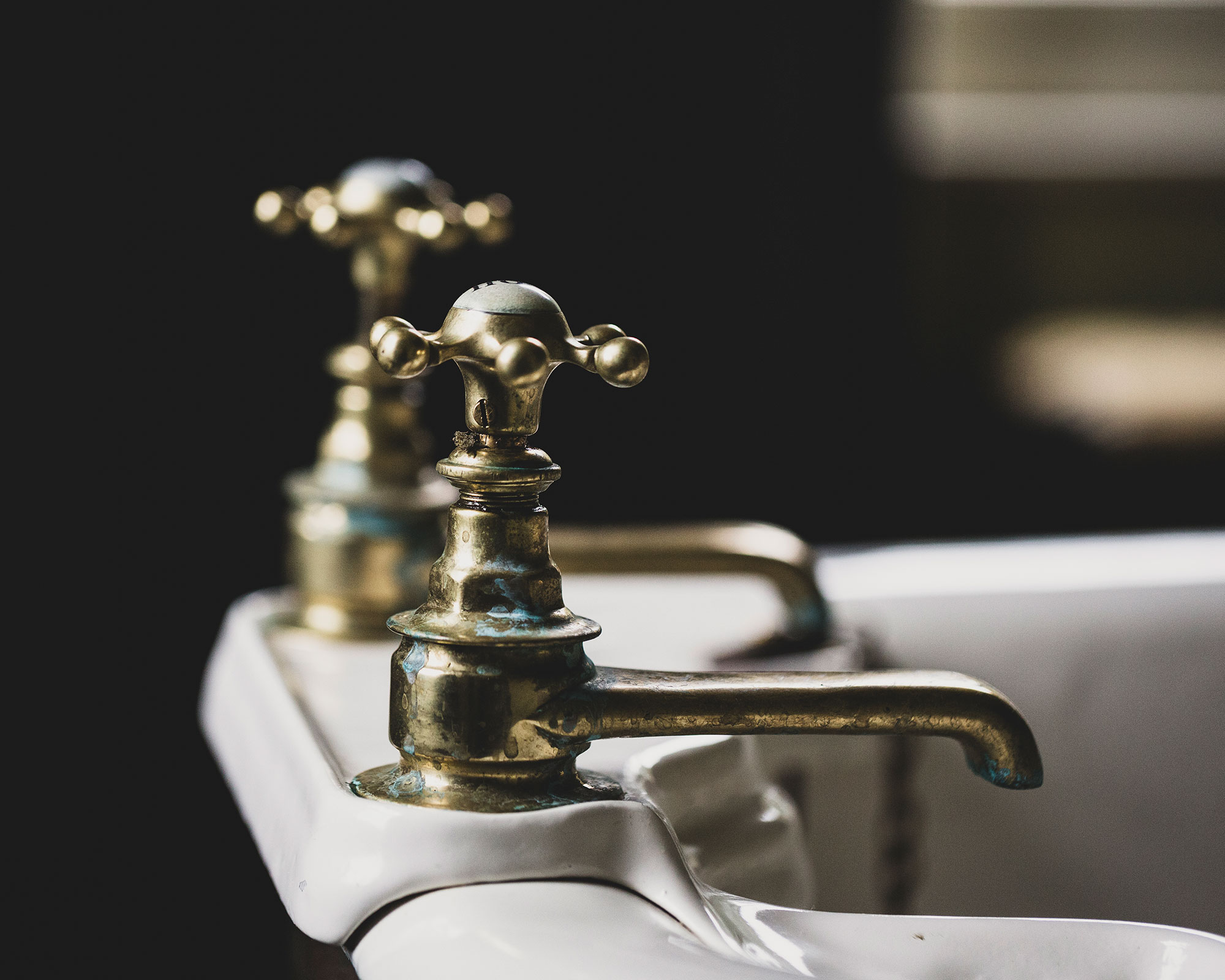How to replace faucet washers – a step by step guide
Some plumbing tasks are easy enough to do yourself, saving you money. Here’s our handy guide on how to replace faucet washers


If you want to replace faucet washers on your own, there are a few simple steps you will need to follow.
Some jobs around the home will need a professional with experience and expertize. Others can be done yourself. This not only saves money but can also save time too, as you can simply get on with it without having to wait for a plumber to be free.
Replacing faucet washers is one of those tasks. It is also worth knowing how to unclog a toilet without a plunger and how to fix a leaky faucet by yourself – and how to prevent such problems from occurring.
‘Washers don’t last forever,’ confirms Lucy Searle, global editor in chief for Homes & Gardens. ‘When old or damaged, they will cause the faucet to leak, as the washer can’t form a watertight seal. This is easy enough to fix though and it won’t take long either.’
Martha Stewart is a firm advocate of doing jobs like this yourself. ‘When the sink is clogged or the toilet runs, don't rush to phone the plumber,’ she says. ‘With the right tools and basic instructions, you can solve most minor plumbing problems in your home, including knowing when to drip faucets.’
How to replace faucet washers
The good news is that this is one of the simplest DIY plumbing tasks and it shouldn’t take long either. In fact, it should only take a few minutes and it won’t need much in the way of tools. You won’t need to do any drilling or mess around with any pipes and, as Polly Shearer, bathroom expert at Tap Warehouse confirms, replacing faucet washers is simple, satisfying and totally safe.
You need to check first whether the faucet has a washer or ceramic disc cartridge. This guide deals with changing a washer so if your faucet has a ceramic disc cartridge then you need to do things differently.
‘Many people are unaware that the cause of a leaky faucet can come from the washer itself. When they get worn, they start to become less effective, so a solution to this is to change the washer,’ says Polly.
Shopping List
You will need:
• Flat-head screwdriver: here are some highly-rated options from Amazon
• Spanner: this 9-piece set from Amazon will do the trick
• WD-40: you can buy this from Amazon
• Old cloth
• New washer
1. Turn off the water supply
There should be an isolation valve underneath the faucet, which can be used to turn off the water to that particular sink. If you don’t have one of these, turn off the water at the mains. If you’re changing the washer on the hot water faucet then you will need to turn off the boiler and immersion heater too.
2. Insert the drain stopper
This will prevent you losing any screws or components down the drain if you drop them. It’s also a good idea to place an old towel inside the sink to avoid damaging the surface if you drop something.
3. Remove the cover from the faucet
Do this using your screwdriver, carefully. This will expose the valve, which can then be removed using the spanner. If it is stiff then hold the faucet in place with a wrench if you have one, but protect the faucet with a cloth first.
4. Secure the washer
The washer is underneath the valve, secured in place with either a screw or a nut. Remove the washer with a spanner or, if it’s too difficult to undo, spray some WD-40 around it and allow this to soak in before trying again.
5. Replace the old washer
Replace the old, worn washer with a new washer in the same size.
6. Put the faucet back together again
Screw the valve back into place, being careful not to overtighten as this can damage the faucet. Fasten the top back onto the faucet and you’re all done.
7. Turn the water back on
Remove the towel from your sink, take out the plug and turn the water back on.
Why do faucet washers need replacing?
Most faucets, whether kitchen or bathroom, comprise two parts – the seat and washer.
When you turn the faucet on, the washer is directed towards the seat, creating pressure. This in turn forces water out through the spout. When you turn the faucet off, the washer creates a watertight seal by pushing against the seat, ensuring no water flows through.
When washers are old and worn, they don’t create this watertight seal and can cause the faucet to leak. When a faucet starts to leak, the first thing to check is if it needs a new washer. They cost very little and can be purchased from DIY or hardware stores as well as online and tend to be sold in packs with different sizes to choose from to match your existing washer.
Do I have to turn the water off to replace a washer?
Mixer units may also have a separate 'o-ring' seal at the base of the spout. This can be replaced without turning off the water supply, but make sure you get the correct size replacement before starting work.
How often should I replace a faucet washer?
As they are prone to constant wear and tear, you can expect to change a washer every one to two years.
Sign up to the Homes & Gardens newsletter
Design expertise in your inbox – from inspiring decorating ideas and beautiful celebrity homes to practical gardening advice and shopping round-ups.

Hayley is an interiors journalist, content provider and copywriter with 26 years experience who has contributed to a wide range of consumer magazines, trade titles, newspapers, blogs and online content. Specialising in kitchens and bathrooms, she has twice won the CEDIA Award for Best Technology feature. Hayley writes for H&G about kitchens, bathrooms, cleaning, DIY and organizing.
-
 Ina Garten's storage pantry is an insightful window into all of the best cookware used by the chef – and it's easy to recreate on your kitchen shelves from $48
Ina Garten's storage pantry is an insightful window into all of the best cookware used by the chef – and it's easy to recreate on your kitchen shelves from $48The beautiful dishware in The Barefoot Contessa's Hamptons pantry showcases the tools she uses most often to cook – this is exactly how you replicate it
By Sophie Edwards Published
-
 Extend the lifespan of your appliance with 5 simple but crucial washing machine maintenance tips
Extend the lifespan of your appliance with 5 simple but crucial washing machine maintenance tipsFrom cleaning the filters to keeping the door open, experts reveal the washer tips they swear by
By Andy van Terheyden Published